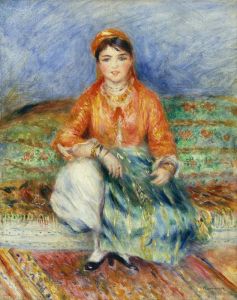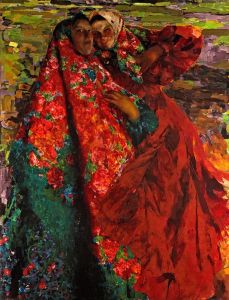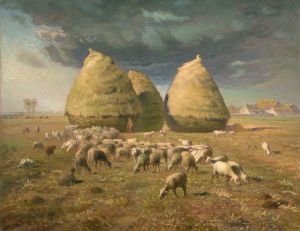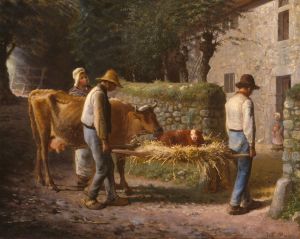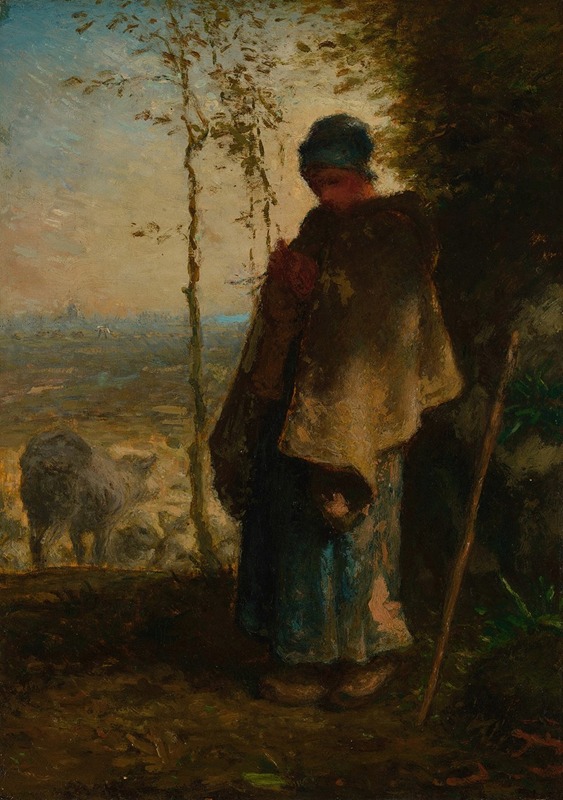
The Little Shepherdess
A hand-painted replica of Jean-François Millet’s masterpiece The Little Shepherdess, meticulously crafted by professional artists to capture the true essence of the original. Each piece is created with museum-quality canvas and rare mineral pigments, carefully painted by experienced artists with delicate brushstrokes and rich, layered colors to perfectly recreate the texture of the original artwork. Unlike machine-printed reproductions, this hand-painted version brings the painting to life, infused with the artist’s emotions and skill in every stroke. Whether for personal collection or home decoration, it instantly elevates the artistic atmosphere of any space.
Jean-François Millet's painting "The Little Shepherdess" is a notable work by the French artist, who is renowned for his depictions of rural life and peasant subjects. Millet was a leading figure in the Barbizon School, a movement that emerged in the mid-19th century in France, emphasizing realism and the portrayal of rural landscapes and scenes of everyday life.
"The Little Shepherdess" exemplifies Millet's focus on the dignity and simplicity of rural laborers. The painting portrays a young shepherdess, a common subject in Millet's oeuvre, reflecting his deep interest in the lives of peasants and their connection to the land. The shepherdess is depicted in a natural setting, likely in the countryside around Barbizon, where Millet spent much of his career.
Millet's work is characterized by its earthy tones and a sense of solemnity, which can be seen in "The Little Shepherdess." The painting captures the quiet strength and resilience of the shepherdess, who is shown in a moment of repose or contemplation. This focus on the individual, set against the vastness of nature, is a hallmark of Millet's style, emphasizing the intimate relationship between humans and their environment.
The composition of "The Little Shepherdess" is simple yet powerful, with the figure of the shepherdess occupying a central position in the canvas. Millet's use of light and shadow adds depth to the scene, highlighting the textures of the landscape and the shepherdess's clothing. This attention to detail is indicative of Millet's commitment to realism and his desire to portray his subjects with authenticity and respect.
Millet's work, including "The Little Shepherdess," had a significant impact on the art world, influencing later artists such as Vincent van Gogh, who admired Millet's ability to convey the nobility of peasant life. Millet's paintings often evoke a sense of timelessness, capturing the enduring rhythms of rural existence.
"The Little Shepherdess" is part of a broader body of work by Millet that explores themes of labor, nature, and the human condition. His paintings are celebrated for their emotional depth and their ability to convey the beauty and hardship of rural life. Through his art, Millet sought to elevate the status of the peasant class, portraying them with dignity and grace.
Today, Jean-François Millet is remembered as a master of 19th-century realism, and "The Little Shepherdess" continues to be appreciated for its poignant depiction of rural life. The painting remains an important example of Millet's artistic vision and his commitment to portraying the world around him with honesty and empathy.







